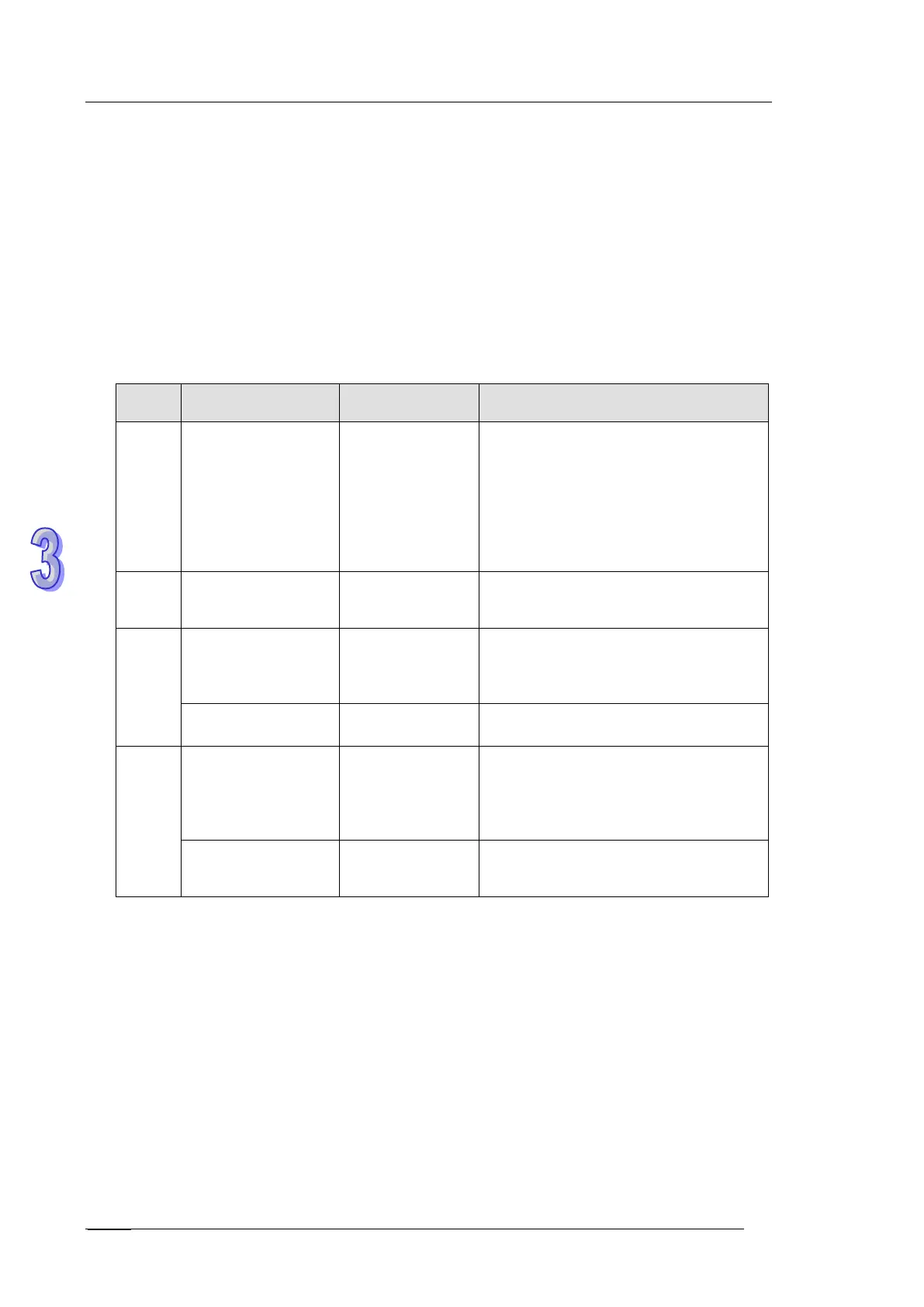DVP-ES2/EX2/EC5/SS2/SA2/SX2/SE&TP Operation Manual - Programming
Points to note:
1. There is no limitation on the times of using this instruction. However, the register No.
designated in S
3
~ S
3
+19
cannot be repeated.
2. For 16-bit instruction, S
3
occupies 20 registers. In the program example above, the area
designated in S
3
is D100 ~ D119.
3. Before the execution of PID instruction, users have to transmit the parameters to the
designated register area by MOV instruction. If the designated registers are latched, use
MOVP instruction to transmit all parameters only once
4. Settings of S
3
in the 16-bit instruction:
Function Setup Range Explanation
S
3
: Sampling time (T
S
)
1~2,000
(unit: 10ms)
Time interval between PID
calculations and updates of MV. If T
S
= 0, PID instruction will not be
enabled. If T
S
is less than 1 program
scan time, PID instruction sets S
3
as 1
program scan time, i.e. the minimum
T
S
has to be longer than the program
S
3
+1:
Propotional gain
(K
P
)
0~30,000(%)
magnifying/minifying the error
S
3
+2:
Integral gain (K
I
) 0~30,000(%)
magnifying/minifying the integral
value (The accumulated error). For
Integral time
constant (T
I
)
0~30,000 (ms) For control mode K10
S
3
+3:
Derivative gain (K
D
)
-30,000~30,000
(%)
magnifying/minifying the derivative
value (The rate of change of the
process error). For control mode
Derivative time
constant (T
D
)
-30,000~30,000
(ms)
For control mode K10
